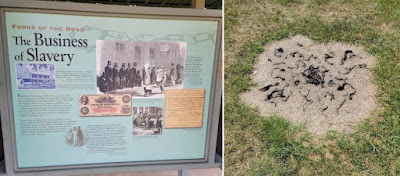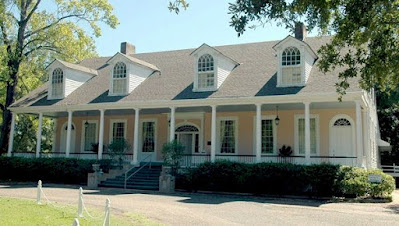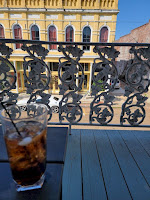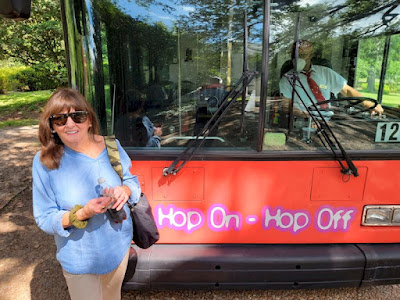Natchez proper sits on bluff far above the Mississippi River. However, Natchez was founded in 1716 in an area called “Natchez-under-the-Hill” at river level. This area was once the rowdiest port on the river – now sometimes called “Natchez improper.” Like the steamboats of the past, riverboat cruises now dock under the hill.
The lowlands along the river in both Mississippi and Louisiana were prime country for growing large crops of cotton and sugarcane using slave labor. Natchez was the main point of export. Before the Civil War, wealthy planters built town homes there in addition to or instead of plantation homes. In the decades preceding the Civil War, Natchez had the most millionaires per capita of any city in the United States. Many of their homes – often mansions – remain today because Natchez surrendered to Union forces without a fight. The homes are now part of Natchez identity and make it a tourist destination.
Natchez was the second largest slave trading center in the United States. Slaves were placed on display at a place called “Forks of the Road.” Shackles that bound them remind visitors of this terrible time. Forks of the Road is recognized by The United Nations Educational, Scientific, and Cultural Organization (UNESCO) as a world heritage site.
Other Confederate connections include the military boarding school attended by Jefferson Davis as a boy. Davis attended Jefferson College, named in honor of President Thomas Jefferson, in 1818 at the age of ten before transferring to a school in Kentucky.
Davis also took a Natchez native, Varina Howell, as his second wife. They were married at the Howell’s residence, The Briars, in 1845. (The Briars was inaccessible and for sale at the time of our visit.) It is said that Jefferson Davis once owned the Governor Holmes House on Wall Street, now a bed and breakfast.
For our short-term stay, Sarah (my heritage travel partner) and I were fortunate to book the Dixon Lofts. Newly refurbished, the 3,000 square foot Dixon features 13-foot ceilings, a fully equipped galley, and a balcony with wrought iron overlooking Main Street. Three large on-suite bedrooms and a laundry provided every comfort. We greatly enjoyed the immense sitting / dining / living area. The balcony was well used for both morning coffee and evening libations. These 160-year-old quarters just couldn’t have been better. We visited over Father’s Day and the Juneteenth holiday.
There are plenty of dining choices in Natchez. The best for us was the Magnolia Grill located under the hill. The Magnolia has an enclosed patio with great views of the river. This is complemented by their excellent menu. For appetizers we enjoyed the fried green tomatoes and the crabmeat stuffed mushrooms. I had the Silver Street Pasta that I thought was the best past dish ever. Sarah enjoyed the fried shrimp.

The best and worst times to visit Natchez are for the spring and fall “pilgrimages.” These times are the best because more antebellum homes are open for tours and there are many special events. These times are the worst because the city is crowded with other pilgrims. However, for history and old house lovers, a visit to Natchez is worthwhile most any time.
Read the companion blog titled Antebellum Splendor.









No comments:
Post a Comment